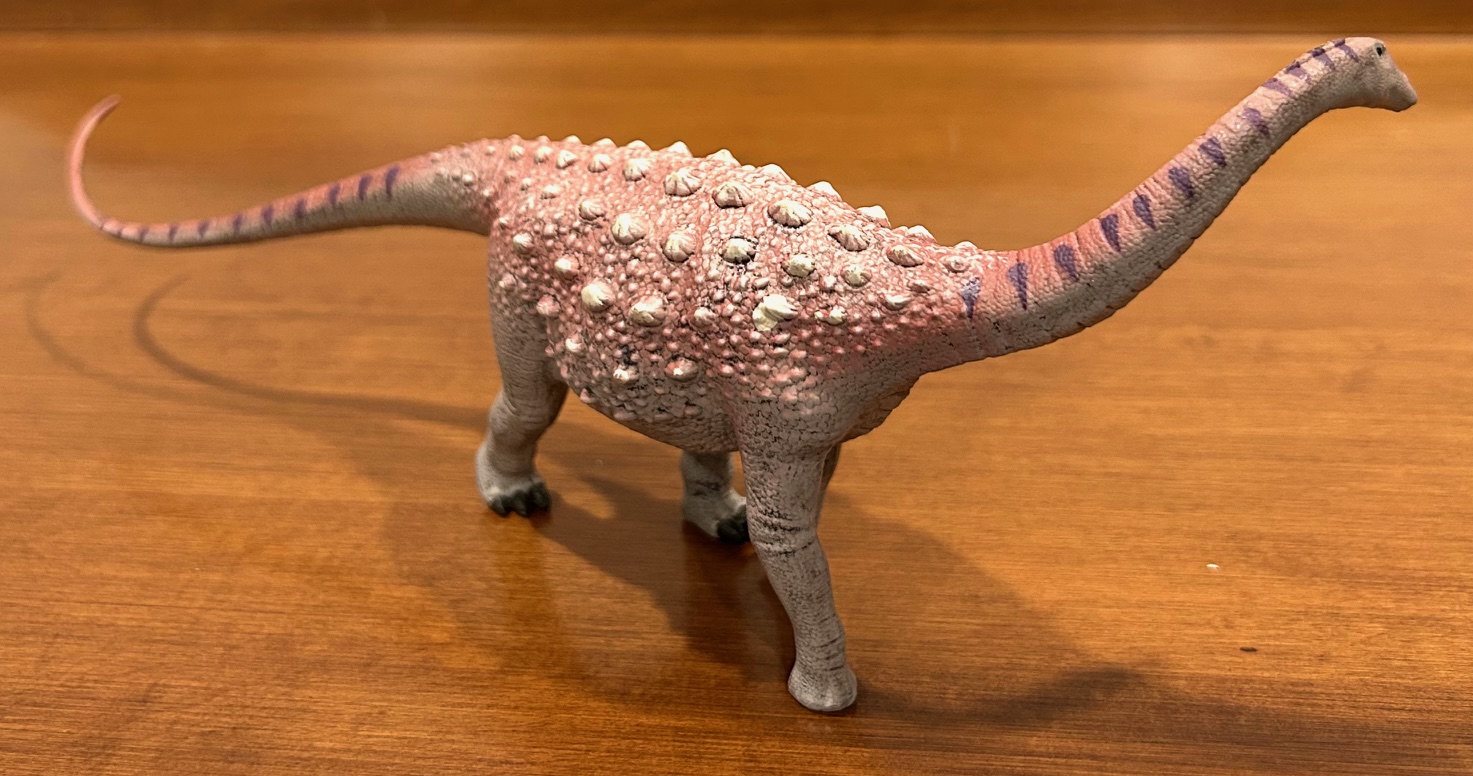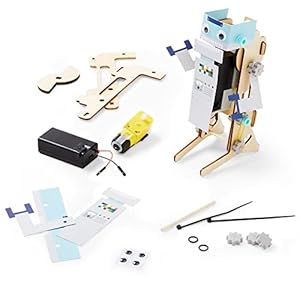
Ever since the demise of the Carnegie Collection, Safari Ltd. has been gradually adding genera from it to their wonderful Wild Safari line. Saltasaurus is the latest such addition. Discovered in 1975 and named in 1980 after Salta Province in Argentina, it was a relatively small titanosaurian sauropod at just 10-12 metres in length. It lived between 70 and 68 million years ago and is notable for being the very first sauropod known to have possessed armour on its body.


New for 2025, this Saltasaurus measures about 30 cm long and stands 10 cm tall, which makes it slightly longer than the Carnegie Collection one. It is sculpted in a walking pose with its both its left front leg and right hind leg in midstep. The head is turned sharply to look to the left and the tail is swinging to the right with the tip curling back to the left. Yet another dinosaur out enjoying a leisurely constitutional. Can’t go wrong with that.


The base colour here is light grey with minimal black wash. The dorsal side is painted a dark shade of pink, with grey protruding through on all the scutes. The eyes are glossy black, the claws are very dark grey, and there are small dark purple stripes on the neck and tail. Not very many dinosaur toys have purple on them, so this is a welcome treat in my book.


The main feature on this toy is, of course, the extensive armour covering the whole of the upper half of the torso. Said armour consists of large, grooved scutes shaped rather like mushroom tops. And protecting the spaces between the scutes are smaller round ossicles. It looks rather impressive, almost as elaborate as the armour on many an ankylosaur. As to what purpose it served, defense against predators immediately springs to mind. Abelisaurs were alive and fluorishing in South America at the same time as Saltasaurus, and there may have still been a carcharodontosaur species or two around as well. Another possibility is that the scutes served as calcium reservoirs for when food was scarce or when females needed to lay their eggs.

The rest of the Saltasaurus‘ body is covered in flat scales with large wrinkles on the neck, belly, legs, and tail. The small head is narrow with a long snout, making it fairly typical for a titanosaur. The neck is relatively short while the tail is very long and whip-like.


The front limbs end in rounded feet with no claws. The hind limbs, which are much larger, end in more oval-shaped feet with three large claws. And the torso is very deep and wide, similar in overall shape to a wooden barrel. Saltasaurus may not have been a very large sauropod, but it was certainly one of the girthiest for its size. It was considered among the most unusual sauropods at the time of its discovery, and it still remains so five decades later.


Overall, the Wild Safari Saltasaurus is a welcome update of the Carnegie one, with far better sculpting and a more realistic appearance, and an unusual colour scheme to boot. I’m a big fan of small sauropods (I find them way more interesting than the mega ones) and I’ve always been a fan of this particular one, so it’s great to finally have a toy of it in my collection. It is definitely worth adding to yours as well. Keep up the great work, Safari. I want a Brachytrachelopan next!

Disclaimer: links to Ebay and Amazon on the DinoToyBlog are affiliate links, so we make a small commission if you use them. Thanks for supporting us!
Trending Products










